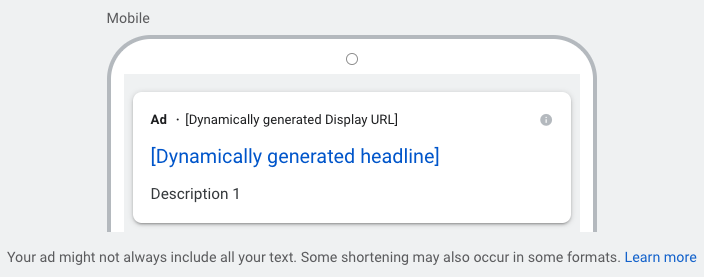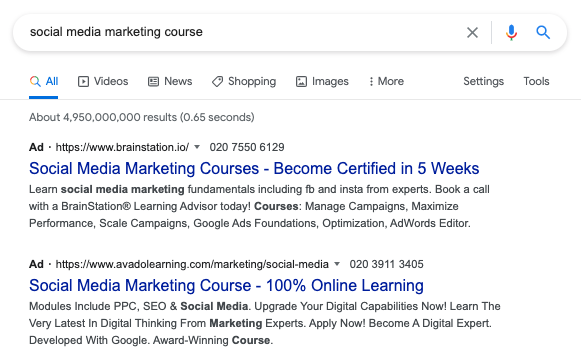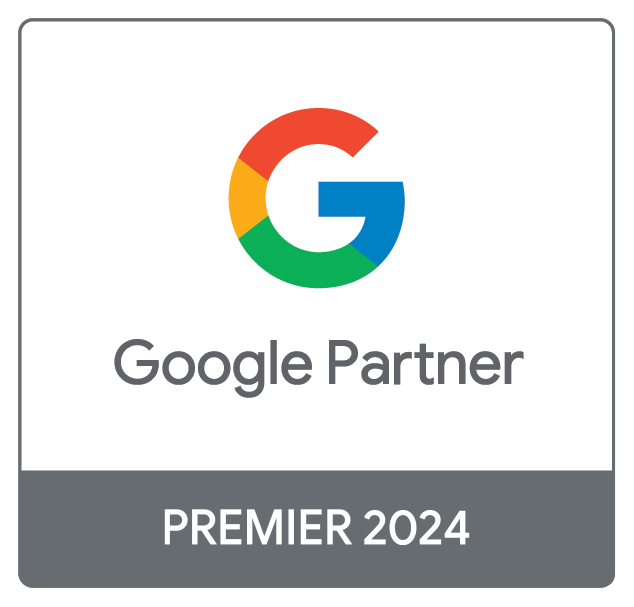There are many ways to engage with your potential customers through Google Search Network. The first step to a successful search campaign is defining your target audience. Then choosing the best targeting approach. Here is a simple guide on the targeting options for the search campaigns.
Search Targeting
Search campaigns allow you to reach users when they are actively searching for particular information. Google shows your ad on a top of a search engine result page. It can potentially influence the users to make a purchase.
Keywords
Ads are triggered by the keywords you bid on (keywords = words and phrases provided by you to Google). When a user is searching for a specific query, Google scans your account to see if there are keywords that match that query. In other words, based on what’s included in your search campaign, Google decides if your ads will be eligible to show up for certain queries or not.
There are plenty of other factors that influence if an ad will be pushed to show for a search query. This includes
– Keyword match types – these which indicate to Google to what extent the keyword you provide needs to match with the user query.
– Negative keywords which – tell Google which keywords to not bid for.
– Keyword bids – which specify how much you are willing to spend for a single click on a given keyword.
All of these can influence who will see your ads.
Dynamic Search Ads
Another type of targeting for Search is Dynamic Search Ads (DSA). These are new to Google Paid Search and are the opposite to keyword targeting. Instead of providing the platform with a list of keywords, you provide them with your website. The search engines will use your site content to match with the user queries.
Desktop view for DSA

Mobile view for DSA

Example of DSA ads in search results with keywords

DSA ads gives you less control over what is visible to users. For example you can show to the engine the pages to scan or even specify a list of pages it can only look at. However, all the ads visibility depends on the content on your site.
Dynamic Search Ads can be a good addition to your search campaign. For example when aiming to expand the reach of your current search campaigns. They will help to match other relevant queries that are not already being bid on in the account.
Audiences
Last but not least, audiences can also be as an alternative targeting option. An addition to your current keyword list or to what is being matched through Dynamic Search Ads.
Audience targeting can be added to ad groups and reach users based on their demographic specifications, their interests, habits and what they are actively searching for.
There are a few audience types for Search campaigns:
- Affinity: it allows you to reach people based on what they are passionate about as well as their habits and interests.
- Detailed demographics: relates to users with long-term life characteristics.
- In-market: takes into consideration users’ recent purchase intent.
- Remarketing: allows reaching users that have interacted with your business.
- Customer Match: reach your existing customers based on your CRM data.
- Similar audiences: reach new users with similar interests to your website visitors or existing customers.
Using the audience layers you can create a special experience for the list of users. By separating them from the rest and creating a separate campaign, adjusting ad copy, setting new bids and many more. This can additionally boost your search campaign.
Each of the targeting options for PPC search campaigns has strengths that could improve your campaign. Nevertheless, the right approach should be decided individually based on a specific case. For the best practice please reach out for additional information.








